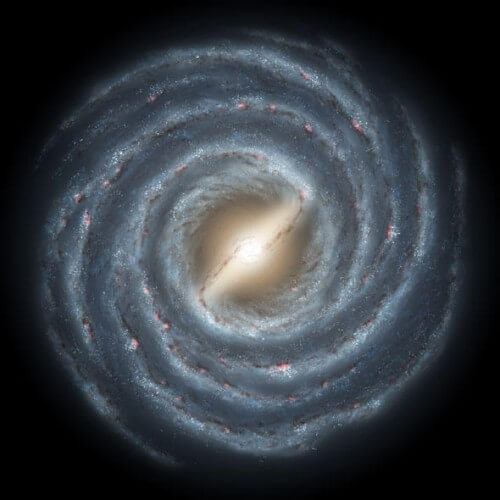New computer simulations claim that runaway stars, colliding with other stars and merging with them serially, may become the medium-sized black holes whose inexplicable origins have baffled astronomers.

New computer simulations claim that runaway stars, colliding with other stars and merging with them serially, may become the medium-sized black holes whose inexplicable origins have baffled astronomers.
The outcome of this snowball, which may occur at the center of dense young star clusters, will cause the formation of black holes, as the stars explode and die.
Medium-sized black holes have not yet been unequivocally predicted. However, they are considered the missing link between black holes with a mass of a tenth of the solar mass and black holes with a mass of more than millions and billions of solar masses. Both of these types have long been documented.
However, theorists are unable to reach a conclusion as to how the intermediate black holes are formed. Some claim that they are formed as a result of accidental collisions between smaller black holes. More exotic ideas include gas clouds, which form black holes, if they radiate most of their energy through neutrinos.
"Both of these proposals have some serious problems, I think," says Simon Portgues Zawart, an astrophysicist at the University of Amsterdam in the Netherlands, who conducted the computer simulations.
Portuguese Zavart and his team suspected that an intermediate black hole formed after a massive star, pulled to the center of a dense star cluster by gravity, merged with other stars in the cluster.
"Stars are like sticky balls - you can push them into each other and you get one star," Portuguese Zawart told New Scientist.
If such a star accumulates a mass of 800 to 3000 times the mass of the Sun before exploding in a supernova, the product of the explosion may be a medium-sized black hole, whose mass ranges from 100 to 1000 solar masses. For this to happen, the cluster must be young in years - about ten million years old - say the researchers.
Four of these young, dense clusters (called YODEC) have been discovered in the Milky Way, and two were recently observed at the center of a galaxy about twelve million light-years away and visible as 82M.
However, apparently only one of the clusters in 82M, called 11 MGG, has a bright X-ray source, which may be a medium-sized black hole devouring a nearby star.
Portugues Zawart and his team used 6-GRAPE, one of the world's fastest computers located in Japan, and a computer program, developed over years, to try to answer the question: Why might an intermediate black hole form in only one of the clusters. The computer worked for a month to calculate the motion of the 100,000 stars in the cluster over time.
They found that the massive stars in cluster 11 MGG – home to a candidate medium black hole – reached the center of the cluster in three million years, while those in the other cluster reached the center of the cluster in 15 million years.
"Massive stars at 11 MGG, therefore, could easily reach the center of the cluster, before exploding in a supernova. Stars at 9 MGG, however, have not had time to do so," the team writes in the Nature paper.
Stein Sigurdsson, an astronomer at the University of Pennsylvania in the United States, says that he wants to know how the proposed model deals with the evolution of stars and the expected loss of mass in cases where rotating stars collide. However, he says, the process may be the central process that leads to the formation of medium-sized black holes.
Tim Roberts, an astronomer at the University of Leicester in the UK, says the proposed model has caused a lot of excitement among many people.
Portugues Zawart hopes to test his simulations by predicting which of the YODECs in our galaxy might contain a medium-sized black hole, detectable with X-rays.
